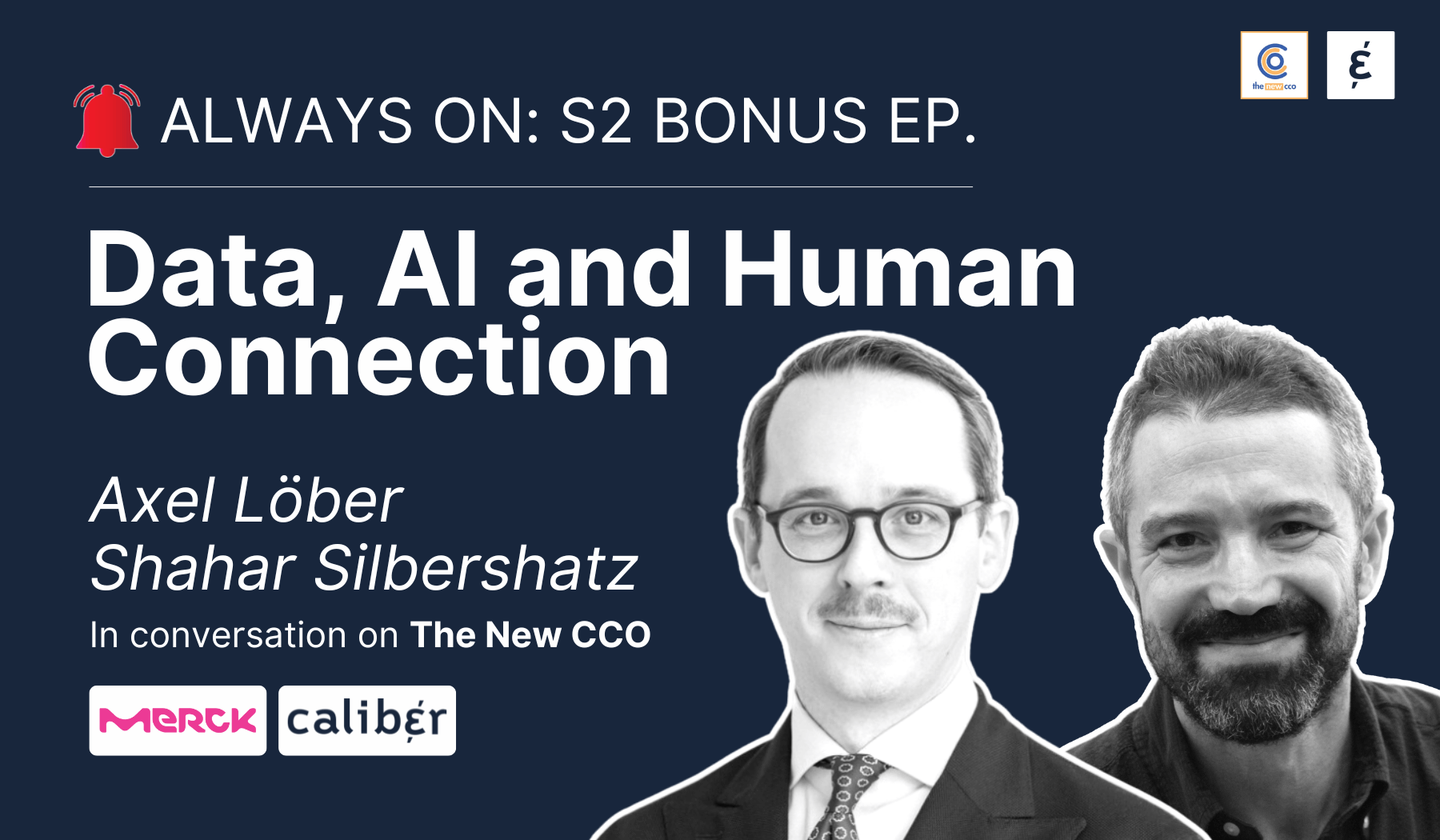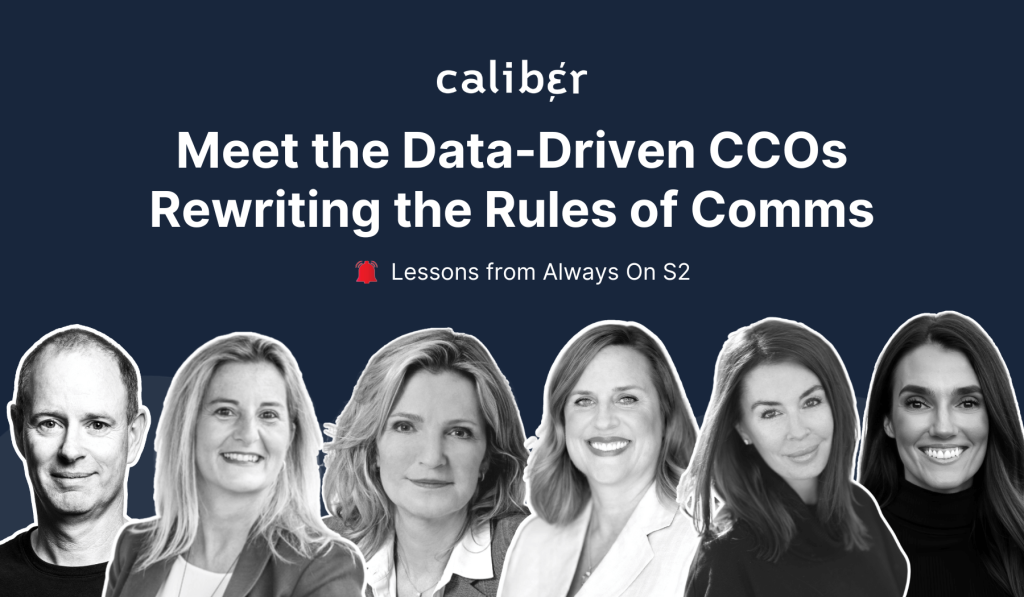

Not long ago, corporate communications meant handling crises, protecting reputation, and keeping the brand on message. It was largely reactive work. Strategy happened elsewhere.
Not anymore.
Today’s Chief Communications Officers are in the room early. As strategic partners, they shape decisions before they’re public, guiding the business through complexity and grounding their advice in a deep, data-informed understanding of stakeholders.
In Season Two of our podcast, Always On, six communications leaders shared how their roles have evolved, why stakeholder intelligence is one of their most valuable assets, and how data helps secure influence at the top. Their stories reveal a clear shift — from old-school messaging to modern, insight-driven leadership.
This shift shows up first in how communicators think about audiences.
Becca Chambers, CMO at Scale Venture Partners and a former Silicon Valley CCO, says comms used to be about either “protecting a brand or building a brand.” Larger companies tended to guard what they had; smaller ones to create something new.
Over time, she’s seen the role expand to include shaping stories, shifting perceptions, engaging employees, and helping companies meet their business goals. “There are so many more shades of what you do as a communications person,” Chambers says. “I like to think of it as a much more important business driver now.”
To do that well, she adds, communicators must meet audiences “where they actually live… not where we think… or where they were living five years ago.”
Other leaders have lived similar shifts. IKEA’s CCO, Belén Frau, has engineered a move from volume to impact, or “doing less things that are more impactful.” Measurement is one of her “obsessions”, because “you can decide what not to do… and [that] free resources to focus on the important things. It’s like a revolution. We take informed decisions based on insights and coming from data.”
Now CCO at Danish logistics giant DSV, experienced communicator Pia Stoklund has seen the field evolve “from pushing out communication to facilitating dialogue”. In today’s interconnected stakeholder environment, she says, CCOs need “much more data-driven and more real-time intelligence than what we used to have” to make informed decisions quickly.
Likewise, in the course of her career, GEA’s CCO, Jill Meiburg, has seen transformation from “a one-way communication shop” into a truly strategic function — one that, in recent years, has become “very data-driven”.
Different industries, same trajectory: comms is no longer a sideline. It’s a driver of business value, and leaders are measured on their ability to prove it. But doing so takes more than instinct. It means showing the impact in ways decision-makers trust — which is where data comes in.
For Meiburg, data is central to making communications strategic. “We all need to have that data competence in the team,” she says — from backend specialists to comms pros who can interpret results.
At GEA, her team tracks more than 20 KPIs, internal and external, and combines them into an overall impact score. A key input is Caliber’s stakeholder-intelligence data, which she blends with other sources to quickly diagnose changes. “If you’re lucky enough to have a robust system, use it in strategy building,” she says.
At Scale Venture Partners, Chambers takes the same approach: “I’ll use whatever data I have to prove the value of what I’m doing.” That might mean showing how an engagement initiative improves retention and ties to business goals. “It’s really hard to do,” she says, “but that’s how you prove your business value.”
Without that proof, she warns, communicators risk being seen as “shapes and colors and words people who do not know how to use data” — and becoming first in line for budget cuts.
Leslie Cafferty, CCO at travel and leisure sector giant Booking Holdings, says data starts with listening. “Communication is a two-way street,” she explains. “We need to be watching everything out there and making sure we can course-correct.” Today, her comms team focuses on insights they can act on, not just numbers for reporting.
And while metrics matter, some of the most valuable intelligence still comes from conversations inside the business.
Indeed, stakeholder intelligence isn’t just in dashboards — it’s in relationships. A case in point? Microsoft’s longstanding CCO Frank X. Shaw spends time with engineers, finance, sales, and legal to understand what’s happening before shaping the external story.
Likewise, Cafferty’s influence at Booking Holdings comes from “really know[ing] the business… at a very granular level” so she can help leaders anticipate how decisions will be perceived.
And at IKEA; Frau says staying relevant and informed earns credibility, which gets you “called to meetings that maybe the previous communication manager wasn’t called to.”
She’s also seen how numbers strengthen that credibility and help comms secure a seat in strategic discussions. Which leads to the question every comms leader faces: how do you actually get that seat at the table?
For Chambers, getting a seat at the table is about being “at the highest levels” to see when the company is out of step with customers, employees, and influencers.
In a similar vein, Meiburg says influence comes from a direct line to the CEO, strong dialogue with board members, and finding “the right format for demonstrating your value.”
For Microsoft’s Frank X. Shaw, success is when colleagues instinctively pull comms into a decision: “When you’re great, somebody says, ‘Oh, we need to bring comms in on this.’”
He also warns against chasing every meeting for its own sake, instead investing in relationships across the business. The more you understand other functions, Shaw says, the better you can connect the dots externally.
Cafferty agrees: deep business knowledge builds trust and makes comms a natural partner in decisions. And for Belén Frau at IKEA, comms enhances business value when “you start being a key player at the table” and get invited into meetings your predecessors might not have been.
Across industries, then, the message is the same: the CCO role demands business fluency, data literacy, and a network of trust. Which brings us to the traits today’s most effective leaders share.
As our podcast interviews with these six comms leaders reveal, today’s most effective CCOs:
In short, the data-driven CCO doesn’t just join the conversation — they shape it. Using stakeholder intelligence, they read the signals, connect the dots, and help their organization see what’s ahead. Indeed, in today’s noisy, fast-moving world, the leaders who listen closely and turn insight into action aren’t just keeping up. They’re setting the pace.